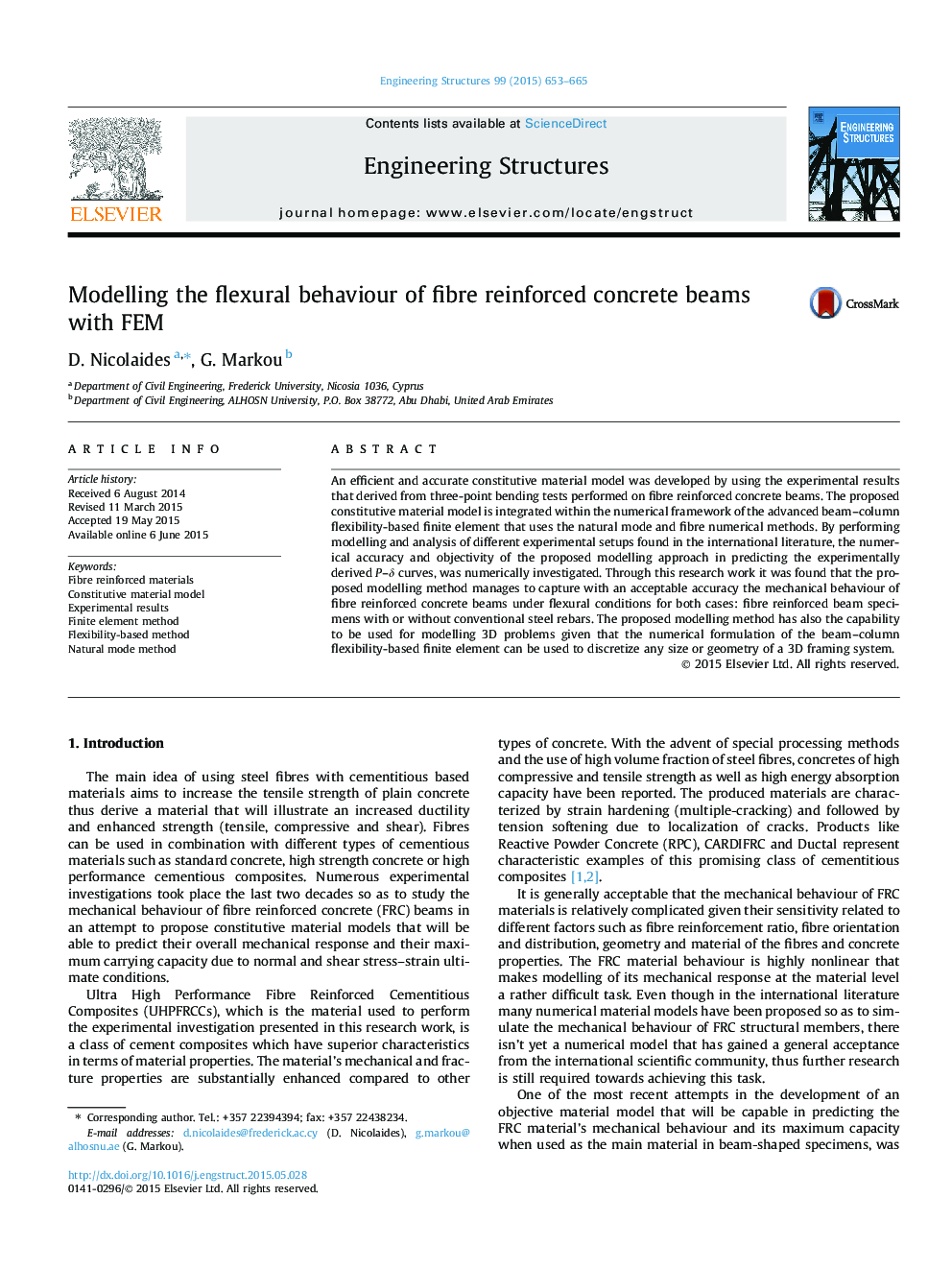| Article ID | Journal | Published Year | Pages | File Type |
|---|---|---|---|---|
| 266211 | Engineering Structures | 2015 | 13 Pages |
•A material model was developed by using results from 3-point bending tests performed on FRC beams.•The model is integrated using the advanced beam–column flexibility-based finite elements.•The proposed method captures the mechanical behaviour of FRC beams under flexural conditions.•The method can also be used for modelling 3D problems.
An efficient and accurate constitutive material model was developed by using the experimental results that derived from three-point bending tests performed on fibre reinforced concrete beams. The proposed constitutive material model is integrated within the numerical framework of the advanced beam–column flexibility-based finite element that uses the natural mode and fibre numerical methods. By performing modelling and analysis of different experimental setups found in the international literature, the numerical accuracy and objectivity of the proposed modelling approach in predicting the experimentally derived P–δ curves, was numerically investigated. Through this research work it was found that the proposed modelling method manages to capture with an acceptable accuracy the mechanical behaviour of fibre reinforced concrete beams under flexural conditions for both cases: fibre reinforced beam specimens with or without conventional steel rebars. The proposed modelling method has also the capability to be used for modelling 3D problems given that the numerical formulation of the beam–column flexibility-based finite element can be used to discretize any size or geometry of a 3D framing system.
